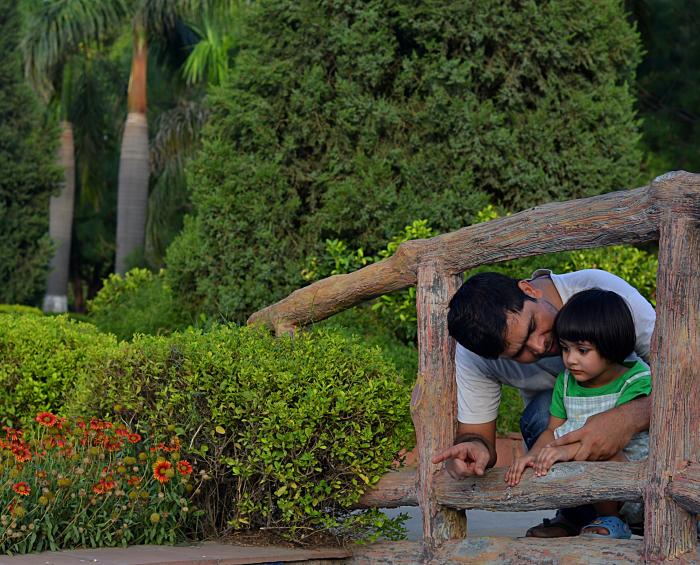I am posting this photo as example but I suggest the answerers to remain generalized.
I took this photo yesterday. Intension was to show the bonding between the father and the daughter as well as the scenic beauty of the location.

Now, I find that my attention does not remain focused on the people here, it gets repeatedly diverted to the trees on the left corner, flowers and green shrub in the front, and the overall greenery in the background.
I could have simply cropped off those distractions but then the picture will only contain the people and that won't be interesting to me. The other so called distractions tell me that they are in a garden or a forest, and they also prevent the subject from staying in the center.
I don't know if I am thinking too much.
If I had the choice to blur out the background then wouldn't that have resulted in blurring the context?
So, I'd like to know with different example photos how to decide whether there is too much context or too little context in a scene?





